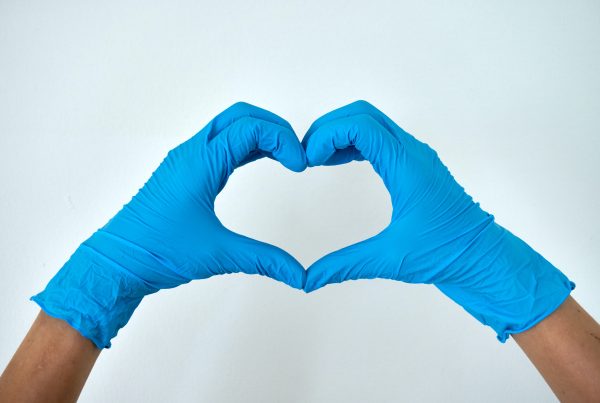La BBC ha mostrato nel suo programma Watchdog come, nella preparazione del ghiaccio alimentare anche catene quali Starbuck, Costa o Caffe Nero, commettano diversi errori grossolani. Il risultato è che nel 30% dei casi il ghiaccio prodotto risulta contaminato da cariche significative di Coliformi fecali. In seguito a ciò anche l’INGA – Istituto Nazionale Ghiaccio Alimentare ha ritenuto opportuno ribadire alcuni punti basilari di corretta gestione. Ma come funziona la macchina del ghiaccio e perchè bisogna trattarla bene?
The BBC has shown in its Watchdog program how even chains such as Starbuck, Costa or Caffe Nero make several blunders in the preparation of food ice. The result is that in 30% of cases the ice produced is contaminated with significant charges of fecal coliforms. Following this, the INGA – National Institute of Food Ice also deemed it appropriate to reiterate some basic points of correct management. But how does the ice machine work and why should it be treated well?
PREMESSA – i coliformi fecali sono batteri che vivono nell’intestino dell’uomo e di animali a sangue caldo. La presenza di coliformi nelle acque deve essere nulla perchè le si possa definire potabili (In Italia secondo il D. Lgs. 31/2001), ma ad ogni modo il legame tra la loro presenza e la contaminazione con batteri patogeni non è così stretto (e di solito è indice di contaminazione recente i batteri hanno infatti vita media di 1-2 giorni). Il loro nome da solo non deve quindi far scattare allarmi immotivati, inoltre bisogna considerare che alcuni campioni di ghiaccio non conformi non rappresentano un quadro approfondito e affidabile della situazione. Tuttavia da grandi catene della produzione alimentare ci si aspetta di certo un miglior controllo della qualità e dell’igiene dei prodotti somministrati al consumatore.
LE BEVANDE GHIACCIATE SONO SOLO LA PUNTA DELL’ICEBERG
Potrebbe sembrare un po’ esagerato preoccuparsi per un po’ di ghiaccio che finisce in qualche bibita gassata al bar di cui non voglio fare nome che i batteri non toccherebbero nemmeno con un palo di 20 m se potessero perchè poco salubre… Ma siamo proprio sicuri che la diffusione del ghiaccio alimentare si limiti solo a questo? In realtà non è così, il ghiaccio alimentare viene usato stabilmente in molti settori della produzione, commercializzazione e somministrazione in varie forme:
- Ghiaccio a cubetti pieni o cavi utilizzato generalmente per la refrigerazione di bevande in bottiglia o per inserimento diretto
in bevande di varia tipologia e quindi destinato al settore della ristorazione, alberghiero, dei bar e dell’intrattenimento (discoteche, club) nonché per eventi organizzati; - Ghiaccio in scaglie utilizzato per la refrigerazione del pesce, di alimenti e di bevande in bottiglia. Viene principalmente utilizzato nel settore ittico, sia a livello di produzione primaria che di vendita nei mercati ittici, pescherie, banchi pesce nei punti vendita della grande distribuzione, oltre che per l’esposizione a temperatura refrigerata di bottiglie di bevande mantenute sigillate e di preparazioni alimentari che necessitano della catena del freddo nel catering ed in alcuni processi industriali produttivi (carni, panificazione);
- Ghiaccio granulare utilizzato per la refrigerazione del pesce, la preparazione di cocktail, l’esposizione di alimenti per la vendita e il consumo, il raffreddamento in alcuni processi industriali produttivi (carni, panificazione). I settori di utilizzo sono gli stessi sono gli stessi del ghiaccio in scaglie.
INTRODUCTION – fecal coliforms are bacteria that live in the intestines of humans and warm-blooded animals. The presence of coliforms in the water must be zero for it to be defined as drinkable (In Italy according to Legislative Decree 31/2001), but in any case the link between their presence and contamination with pathogenic bacteria is not so close ( and it is usually an indication of recent contamination as the bacteria have an average life of 1-2 days). Their name alone must therefore not trigger unjustified alarms, and it must also be considered that some non-compliant ice samples do not represent an in-depth and reliable picture of the situation. However, a better control of the quality and hygiene of the products administered to the consumer is certainly expected from large food production chains.
FROZEN DRINKS ARE JUST THE HIGHLIGHT OF THE ICEBERG
It might seem a bit exaggerated to worry about a little ice that ends up in some fizzy drink at the bar that I don’t want to name that the bacteria would not even touch with a 20m pole if they could because it is unhealthy … Are you sure that the spread of food ice is limited only to this? In reality this is not the case, food ice is used permanently in many sectors of production, marketing and administration in various forms:
Full or hollow cubes ice generally used for the refrigeration of bottled beverages or for direct insertion
in drinks of various types and therefore intended for the catering, hotel, bar and entertainment sectors (discos, clubs) as well as for organized events;
Flake ice used to refrigerate fish, bottled foods and beverages. It is mainly used in the seafood sector, both at primary production and sales level in fish markets, fishmongers, fish counters in large-scale retail outlets, as well as for the refrigerated temperature display of bottles of beverages kept sealed and food preparations. which require the cold chain in catering and in some industrial production processes (meat, bread making);
Granular ice used for the refrigeration of fish, the preparation of cocktails, the display of food for sale and consumption, cooling in some industrial production processes (meat, bread making). The sectors of use are the same as for flake ice.
LA MACCHINA DEL GHIACCIO COS’È E COME FUNZIONA
Così come un frigo (dal cui principio di funzionamento non si allontana) anche la macchina del ghiaccio è formata da alcuni componenti fondamentali: l’evaporatore, il condensatore e il compressore a cui si aggiunge una valvola a farfalla che controlla il flusso del refrigerante.
Il compressore aumenta la pressione di un gas refrigerante e lo convoglia al condensatore dove viene condensato in liquido ad alta pressione. Questo passando attraverso la valvola a farfalla diminuisce la sua pressione e viene condotto all’evaporatore. In questa fase avviene lo scambio di calore con il refrigerante che ritorna allo stato di gas a bassa pressione e si forma il ghiaccio.
Il ciclo è quindi pronto a ripartire.
THE ICE MACHINE WHAT IT IS AND HOW IT WORKS
As well as a refrigerator (whose operating principle does not depart from) also the ice machine is made up of some fundamental components: the evaporator, the condenser and the compressor to which is added a butterfly valve that controls the flow of the refrigerant.
The compressor increases the pressure of a refrigerant gas and conveys it to the condenser where it is condensed into liquid at high pressure. This passing through the throttle valve decreases its pressure and is conducted to the evaporator. In this phase the heat exchange takes place with the refrigerant which returns to the state of gas at low pressure and ice is formed.
The cycle is then ready to restart.
I PRINCIPALI PROBLEMI
Sottovalutare l’aspetto igienico della produzione del ghiaccio anche in una piccola attività alimentare può comportare seri rischi. È per questo motivo che l’Istituto Nazionale Ghiaccio Alimentare, un’associazione di aziende che producono ghiaccio, ha creato un manuale per il corretto utilizzo di questo alimento che è stato approvato anche dal ministero della Salute e che contiene una serie di indicazioni essenziali per gli operatori del settore.
È impossibile definire dalla colorazione o dalla trasparenza o opacità del ghiaccio se l’acqua utilizzata per produrlo possa avere dei problemi. Acque molto calcaree, per esempio, tendono a produrre cubetti bianchi, lattiginosi, ma il calcare è una normale componente dell’acqua e non indica se vi siano contaminazioni o meno. Piuttosto è importante far analizzare periodicamente l’acqua di rete e, se necessario, dotarsi di un impianto di filtrazione. Poter contare su un’acqua ineccepibile dal punto di vista della qualità è fondamentale non soltanto per la produzione di ghiaccio ma anche di tutti quei prodotti, come granite, sorbetti, creme fredde, che vengono preparati nei granitori a partire da miscele appositamente studiate dalle aziende del settore.
I pericoli principali possono essere schematizzati come segue:
- pericoli fisici: sono rappresentati da corpi estranei di varia natura che possono contaminare il ghiaccio e creare danni al consumatore se ingeriti
- pericoli chimici: pericoli chimici derivanti dalle acque potabili utilizzate per la produzione del ghiaccio (da attività umane o naturali come pesticidi o metalli e idrocarburi), pericoli chimici derivanti dai materiali utilizzati per l’imballaggio primario a diretto contatto con il ghiaccio (non adatti o conservati in condizioni non conformi), pericoli chimici legati al processo produttivo (ad es. IPA per utilizzo di motori a scoppio in ambienti chiusi, lubrificanti delle macchine industriali come i carrelli elevatori, detergenti e sanificanti, allergeni):
- pericoli biologici: microrganismi (la capacità del ghiaccio di abbattere i microrganismi è generalmente parziale e dipende da una serie di fattori quali temperature di mantenimento del ghiaccio, tempi di mantenimento del ghiaccio, caratteristiche delle singole specie microbiche), o infestanti (contaminazione microbica tramite le feci, anche con microrganismi patogeni; insudiciamento del ghiaccio; contaminazione con frammenti/parti degli infestanti stessi).
Al di là degli aspetti più tecnici anche il semplice comportamento dell’operatore come sempre può costituire un importante fattore di rischio:
- preleva direttamente il ghiaccio con il bicchiere dal contenitore: la parte esterna del tumbler non è mai abbastanza pulita, perché viene toccata con le mani
- non ha o non utilizza la palettina in dotazione della macchina, la sessola, e quindi utilizza altri strumenti di fortuna che poi vengono magari tenuti e appoggiati in giro.
- appoggia in giro per l’attività la stessa sessola, e non la tiene nel suo alloggiamento dedicato
- non gestisce la pulizia di tutti i contenitori o gli strumenti in cui il ghiaccio va a finire.
- non tiene in ordine e pulita la postazione di lavoro
- conserva il ghiaccio in contenitori aperti o, peggio ancora, nella glacette in cui sono state riposte precedentemente le bottiglie di vino o liquore
LE RACCOMANDAZIONI PER UN GHIACCIO SICURO
Qualche consiglio valido nelle attività come a casa per la prevenzione dei problemi più comuni:
- Pulizia del vano refrigerante ogni volta che si accumulano residui di cibo (nonostante sia surgelato) o ghiaccio sulle pareti, che incamera ogni eventuale residuo e può comunque sfarinarsi e cadere sulle vaschette portaghiaccio;
- Pulizia delle vaschette, con normali detersivi per i piatti, prima di ogni nuovo utilizzo;
- Refrigerazione rapida dell’acqua posta nelle vaschette a -18°C;
- Conservazione ad almeno 5-10 °C sotto lo zero, per evitare liquefazioni (terreno ideale per sviluppo microbico) e ricongelamenti.
- Isolamento delle vaschette da quanto contenuto nel freezer/congelatore: coprendole una per una con foglio di alluminio o utilizzando i sacchetti appositi, si possono poi impilare e porre tutte insieme in un contenitore della giusta misura.
- Conservazione del ghiaccio per non più di 4-6 settimane dalla preparazione;
- Utilizzo del ghiaccio conservato in ciascuna vaschetta in una volta sola (scartare quello non immediatamente utilizzato);
- Facilitare la fuoriuscita dei cubetti dalle vaschette ponendole brevemente a contatto con acqua calda;
- Utilizzare pinze o cucchiai puliti per trasferire il ghiaccio nei bicchieri, vassoi, piatti o nel tritaghiaccio;
- Attenzione alla pulizia dei macchinario eventualmente usato per tritare il ghiaccio. Infine, nel caso di frigoriferi provvisti di preparatore automatico di ghiaccio, seguire attentamente le procedure di manutenzione e sanitizzazione dell’apparecchio, contenute nei libretti d’istruzione.
THE MAIN PROBLEMS
Underestimating the hygienic aspect of ice production even in a small food business can involve serious risks. It is for this reason that the National Institute of Food Ice, an association of companies that produce ice, has created a manual for the correct use of this food which has also been approved by the Ministry of Health and which contains a series of essential indications for sector operators.
It is impossible to define from the color or from the transparency or opacity of the ice if the water used to produce it could have problems. Very calcareous waters, for example, tend to produce white, milky cubes, but limestone is a normal component of water and does not indicate whether there is contamination or not. Rather, it is important to have the mains water periodically analyzed and, if necessary, to have a filtration system. Being able to count on impeccable water from the point of view of quality is essential not only for the production of ice but also for all those products, such as slushes, sorbets, cold creams, which are prepared in slush machines starting from mixtures specially designed by the companies. of the sector.
The main dangers can be summarized as follows:
physical dangers: they are represented by foreign bodies of various kinds that can contaminate the ice and create damage to the consumer if ingested
chemical dangers: chemical dangers deriving from drinking water used for ice production (from human or natural activities such as pesticides or metals and hydrocarbons), chemical dangers deriving from materials used for primary packaging in direct contact with ice (unsuitable or stored in non-compliant conditions), chemical hazards related to the production process (eg IPA for the use of internal combustion engines in closed environments, lubricants of industrial machines such as forklifts, detergents and sanitizers, allergens):
biological hazards: microorganisms (the ability of ice to break down microorganisms is generally partial and depends on a series of factors such as ice holding temperatures, ice holding times, characteristics of individual microbial species), or weeds (microbial contamination through faeces, even with pathogenic microorganisms; fouling of ice; contamination with fragments / parts of the pests themselves).
Beyond the more technical aspects, even the simple behavior of the operator, as always, can constitute an important risk factor:
takes the ice directly with the glass from the container: the outside of the tumbler is never clean enough, because it is touched with the hands
it does not have or does not use the scoop supplied with the machine, the scoop, and therefore uses other makeshift tools which are then perhaps kept and placed around.
places the same scoop around the activity, and does not keep it in its dedicated housing
it does not manage the cleaning of all the containers or tools in which the ice ends up.
does not keep the workplace tidy and clean
store the ice in open containers or, even worse, in the icebox where the bottles of wine or liqueur were previously stored
RECOMMENDATIONS FOR SAFE ICE
Some advice valid in activities such as at home for the prevention of the most common problems:
Cleaning the refrigeration compartment every time food residues (despite being frozen) or ice accumulate on the walls, which collects any residue and can still crumble and fall on the ice trays;
Cleaning the trays, with normal dish detergents, before each new use;
Rapid cooling of the water placed in the trays at -18 ° C;
Storage at least 5-10 ° C below zero, to avoid liquefaction (ideal medium for microbial development) and refreezing.
Insulation of the trays from the contents of the freezer / freezer: covering them one by one with aluminum foil or using the special bags, they can then be stacked and placed all together in a container of the right size.
Ice storage for no more than 4-6 weeks after preparation;
Use of the ice stored in each tray at once (discard the one not immediately used);
Facilitate the exit of the cubes from the trays by briefly placing them in contact with hot water;
Use clean tongs or spoons to transfer the ice into glasses, trays, plates or the ice crusher;
Pay attention to the cleaning of any machinery used to crush the ice. Finally, in the case of refrigerators equipped with an automatic ice maker, carefully follow the maintenance and sanitization procedures of the appliance, contained in the instruction booklets.


